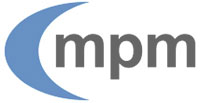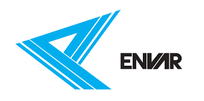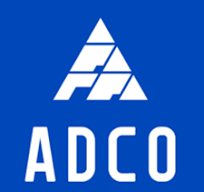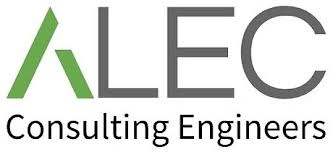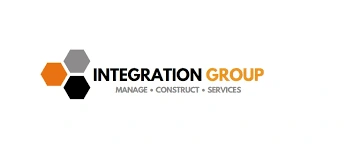
Combining BIM with streamlined asset tracking and management systems, construction companies can significantly enhance their project delivery capabilities, improve resource utilization, and ensure timely project completion.
BIM provides a comprehensive, collaborative platform that integrates all aspects of a construction project into a single, unified model. This model encompasses architectural designs, structural details, mechanical and electrical systems, and more, enabling stakeholders to visualize and manage every aspect of the project lifecycle from planning and design through construction and operation.
Traditional methods of asset management in construction often involve manual tracking and paper records, which are prone to errors, misplacement, and inefficiencies. Construction sites are dynamic environments with numerous assets moving in and out, making it challenging to maintain accurate and up-to-date records. Misplaced tools, underutilized equipment, and inaccurate inventory counts can lead to costly delays and budget overruns.
By integrating BIM with advanced asset-tracking technologies such as GPS, RFID, and IoT, construction companies can overcome these challenges and achieve a higher level of efficiency and accuracy in managing their assets.
GPS Tracking GPS tracking systems are invaluable for managing large, mobile assets such as vehicles and heavy machinery. These systems provide real-time location data, allowing project managers to monitor asset movements and optimize their use. Integrating GPS data into the BIM model ensures that the location and status of all critical assets are always up to date, enhancing operational efficiency and security.
RFID Tags RFID tags are ideal for tracking smaller tools and materials. These tags can be scanned to quickly check items in and out of storage, ensuring accurate inventory records. When integrated with BIM, RFID technology can provide a real-time view of asset availability and location within the project site. This integration reduces manual counting, minimizes errors, and ensures that all assets are always accounted for.
IoT Devices IoT devices enhance asset tracking by providing detailed data on asset condition and performance. Sensors attached to machinery can monitor parameters such as engine temperature, fuel levels, and operational hours. This data, when fed into the BIM model, allows for predictive maintenance, reducing unexpected breakdowns and extending the lifespan of assets. The BIM model can also use this data to generate alerts for routine maintenance, ensuring that all equipment is serviced on time.
Benefits of BIM-Enhanced Asset Management
Improved Project Efficiency By integrating asset tracking data into the BIM model, project managers gain a comprehensive view of all assets in real time. This visibility enables better planning and allocation of resources, reducing downtime and delays. With accurate data on asset location and condition, project managers can make informed decisions that enhance project efficiency.
Cost Savings Accurate asset tracking minimizes losses due to theft or misplacement and reduces the need for renting or purchasing additional equipment. Optimized asset utilization ensures that resources are used effectively, leading to substantial cost savings. Additionally, predictive maintenance facilitated by IoT data can prevent costly repairs and extend the lifespan of assets.
Enhanced Collaboration and Communication BIM serves as a collaborative platform where all stakeholders can access and share information. Integrating asset tracking data into the BIM model ensures that everyone involved in the project has access to the latest information about asset status and availability. This transparency improves communication, reduces misunderstandings, and enhances overall project coordination.
Better Decision-Making With comprehensive data on asset performance and usage integrated into the BIM model, project managers can identify underutilized assets, plan maintenance schedules, and make informed choices about asset procurement and allocation. This data-driven approach leads to more effective decision-making and optimized project outcomes.
As the construction industry continues to embrace digital transformation, leveraging the combined power of BIM and asset-tracking technologies will be essential for delivering successful, timely, and cost-effective projects. Investing in these innovative solutions sets the foundation for a more agile, responsive, and efficient construction process, capable of meeting the demands of increasingly complex projects.
Draftech – Your Project, Our Expertise
Testimonials
Thank you for all your efforts on our projects; they have been an invaluable contribution to their success. We look forward to working with you on future projects.
Ian Ferguson MPM Group
Jess and Karl at Draftech were amazing. The communication from the start was prompt, and the entire process was extremely easy. We needed their knowledge on Air Schematics, and they had made one up for our buildings that we service. Thanks so much, and we will be using you guys in the future. Cheers, Air Control Australia.
Greg Colebrook AirControl Australia
With Draftech’s thorough understanding of building services modelling and close attention to detail, Forth has been afforded the opportunity to outsource some of our BIM projects with absolute confidence in the accuracy of the final product.
Gary Murdoch Forth Consulting
Very professional and efficient organization. Delivered a great product to a tight deadline.
ACE Power
Karl and the team are very professional and have a vast knowledge of BIM coordination.
Dwayne Willaims Babinda Electrics
We had multiple large projects with tight deadlines and needed a company we could trust. The teams delivery, attention to detail and understanding of what is being designed is always executed to a high standard.
Martin O’Donovan Envar Engineers
Draftech offered a flexible and reliable approach to working collaboratively with our team. They met our expectations and quality requirements and also offered up new ideas.
Draftech have proven to be a valuable and trustworthy resource and we will continue to work with Draftech on other projects.
Simon Marsden Umow Lai
Draftech is different from others in the professionalism and features they provide.
The ability to walk through projects in real time online provides invaluable insight into problem areas and helps provide an efficient resolution on the spot without many phone calls, emails and the necessity for us to paw through countless drawings to understand the issues.
Todd Morris Manager - Air mech
Draftech were put forward to FIP Electrical as the solution to Coordinate, Model, carry out clash detection, provide Electrical Services Shop Drawings, as built documentation and completed electrical model.
Simon Thorpe FIP Electrical
In close collaboration Draftech set up all our systems and model deliverables. In this process Draftech have proven to be a valuable resource for us and demonstrated commitment, understanding and professionalism.
David Skelley DJCoalition
Draftech’s attention to detail and proactive nature throughout the project assisted us in identifying issues before becoming evident on site, saving us both time and unexpected costs.
Matt Payne PJM Engineering Services
They delivered very high quality Revit models and associated 2D documentation at key milestones, working to a tight budget and in strict accordance with the Architects’ BIM requirements.
Peter Thomas Geoff Hesford
We found Draftech’s work to be of high standard and the team delivered exactly as agreed, in fact, when we considered the project complete, Draftech put further resources into the project as they were not satisfied.
John Johnson Beca
Engaging Draftech during design gave us the tools to make smart decisions.
Hansen Yuncken Design Manager - Michael Harkins
The drafting service is timely, reliable and fit for purpose for the built environment.
Peter Harvey Harvey Industries
Draftech stands apart from other drafting services that we have previously used in their attention to detail and ability to adapt to the individual client’s requirements.
Doug Holt McCaig Aircon
I can confidently recommend Draftech as a solid and reliable supplier, and experts in their field. I look forward to working with them again in the near future.
Chris Behan Norman Disney & Young
After seeing the benefits Draftech provided us on the Townsville Hospital Redevelopment we have set up a relationship with Draftech and intend to continue to use their BIM knowledge and skills for our future projects.
Brad Lund Energy Power Systems
Draftech has no competition as they are in a class of their own.
John Boyes Babinda Electrics
Draftech Developments Drafting and Design Capabilities, in conjunction with their outstanding level of Client service and support has provided great solutions to our engineering and Drafting Design portions within our Gorgon Barrow Island Project.
Aaron Hazelton Applied Electro Systems Pty Ltd
Draftech set up necessary systems and workflows very quickly, but also setup auditable estimating and weekly cost tracking processes that we utilised, requiring little maintenance.
TOM PURDON MPM GROUP





















